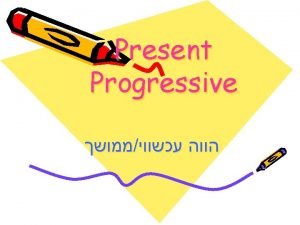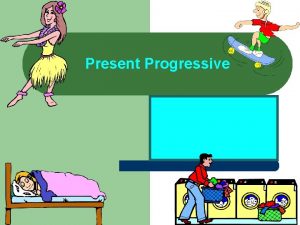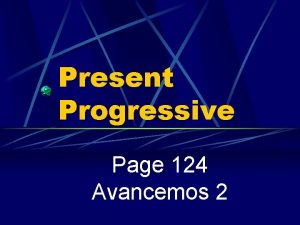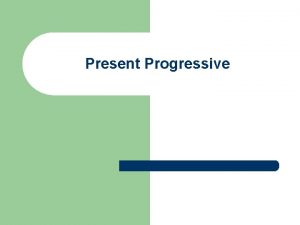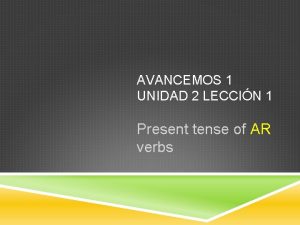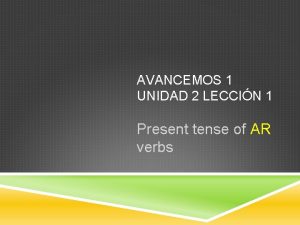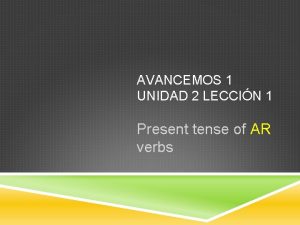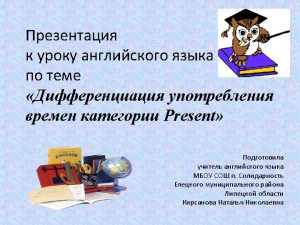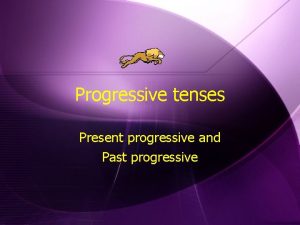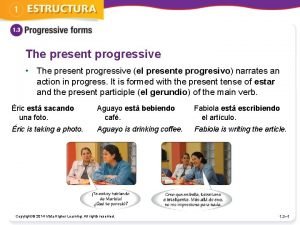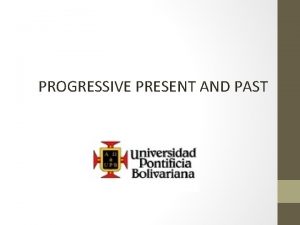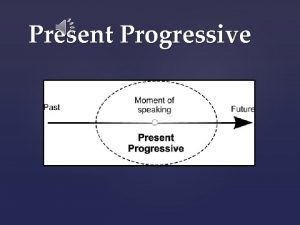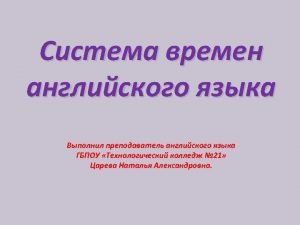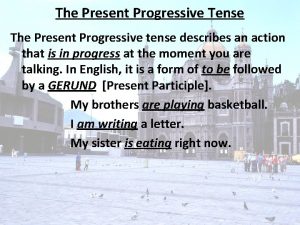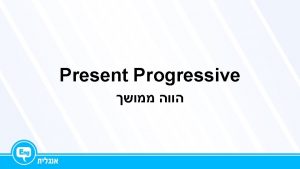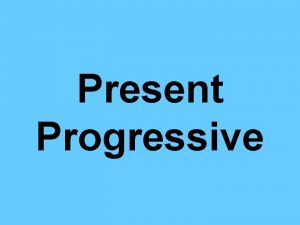Present Progressive Avancemos 2 Unidad 2 Leccin 2


































- Slides: 34

Present Progressive Avancemos 2 Unidad 2 Lección 2

Present Progressive l l Present Progressive in Spanish is a verb form that tells what is happening right now. It consists of using a helping verb “estar” plus the present participle. The present participle in English ends in –ing. The participle is formed by dropping the infinitive ending. Then, add the new ending - either “-ando” (for –ar verbs) or “-iendo” (for –er and –ir verbs) to the stem of the verb.

The verb ESTAR (to be) Yo estoy Nosotros estamos Tú estás Él/ella/usted está Ellos/ellas/ustedes están

How to Form a Present participle= AR VERBS = -ar +ando ER VERBS = -er +iendo IR VERBS = -ir +iendo

Práctica 1 1. She is eating. 1) Ella está comiendo. 2. We are taking a taxi. 2) 3. They are talking. 3) Nosotros estamos tomando un taxi. Ellos están hablando. 4. She is writing a postcard. 4) Ella está escribiendo una tarjeta postal. 5. We are fishing. 5) Nosotros estamos pescando. 6. I am drinking a soda. 6) Yo estoy bebiendo un refresco.

Present Progressive l As always, there are some irregulars : “y” verbs: When the stem of an –er or –ir verb ends in a vowel (creating a double vowel word), we change the -iendo to –yendo l Stem-changing “ir" verbs continue to stem-change in the participle with a small difference: – O-UE stem-changers change from O-U – E-IE and E-I stem-changers both change from E-I. Decir–diciendo pedir-pidiendo dormir-durmiendo

Stem changing –ir verbs o – ue u e–i i e-ie i

Examples of stem-changers l l l l Dormir – to sleep Decir – to say/tell Pedir – to request/ask for Repetir – to repeat Seguir – to follow/continue Servir – to serve Vestir – to dress Durmiendo l Diciendo l Pidiendo l Repitiendo l Siguiendo l Sirviendo l vistiendo l

Práctica de “stem changers” 1) I am sleeping. 1. Yo estoy durmiendo. 2) She is requesting. 2. Ella está pidiendo. 3) They are serving. 3. Ellos están sirviendo. 4) We are saying. 4. Nosotros estamos 5) You are repeating. diciendo. 5. Tú estás repitiendo.

Práctica de “y verbs” 1. She is reading. 1. Ella está leyendo. 2. They are bringing. 2. Ellos están trayendo. 3. I am believing. 3. Yo estoy creyendo.

Práctica del Presente Progresivo

¿Qué está haciendo? A. Está jugando al tenis.

¿Qué está haciendo? A. Está leyendo un periódico.

¿Qué está haciendo? A. Está caminando en el bosque.

¿Qué está haciendo? A. Está corriendo.

¿Qué están haciendo? A. Están leyendo un libro.

¿Qué está haciendo? A. Está lavando la ropa.

¿Qué está haciendo? A. Está trabajando en la oficina.

¿Qué está haciendo? A. Está comiendo un sandwich.

¿Qué está haciendo? A. Está pintando.

¿Qué está haciendo? A. Está hablando por teléfono.

¿Qué está haciendo? A. Está durmiendo.

¿Qué está haciendo? A. Está bailando.

¿Qué está haciendo? A. Está durmiendo.

¿Qué están haciendo? A. Están bailando.

¿Qué está haciendo? A. Está montando a caballo.

¿Qué está haciendo? A. Está jugando al fútbol.

¿Qué está haciendo? A. Está andando en patineta.

¿Qué está haciendo? A. Está pescando.

Reflexive Verbs with the Present Progressive l What if we have a reflexive verb? l Or one of those object pronouns like lo or la?

Reflexive Verbs with the Present Progressive The reflexive or object pronoun can be placed before the conjugated form of estar. Example: Ahora me estoy duchando. (Reflexive) I am showering now. Juana lo está haciendo ahora. (Object Pronoun) Juana is doing it now.

Reflexive Verbs with the Present Progressive OR They can be attached to the end of the present participle. (will need accent) Example: Ahora estoy duchándome. I’m showering now. Juana está haciéndolo ahora. Juana is doing it now.

Práctica de pronombres: 1. I am washing my face. 2. We are getting ready. 3. They are brushing their teeth. 4. She is putting on make up. 5. He is drying his hair. 1. Me estoy lavando la cara. / Estoy lavándome la cara. Nos estamos arreglando. / Estamos arreglándonos. 2. Se están cepillando los dientes. /Están cepillándose los dientes. 3. 4. Ella se está maquillando. / Está maquillándose. 2. Él se está secando el pelo. / Él está secándose el pelo.

FIN
 Avancemos 2 unidad 2 leccion 2
Avancemos 2 unidad 2 leccion 2 Avancemos 2 unidad 2 leccion 1
Avancemos 2 unidad 2 leccion 1 Avancemos 2 unidad 1 leccion 2
Avancemos 2 unidad 1 leccion 2 Avancemos 1 unidad 2 leccion 1
Avancemos 1 unidad 2 leccion 1 Eranare
Eranare Unidad 2 leccion 1 avancemos 3
Unidad 2 leccion 1 avancemos 3 Avancemos 3 unidad 1 leccion 1 vocabulario a
Avancemos 3 unidad 1 leccion 1 vocabulario a Avancemos 3 unidad 5 leccion 1
Avancemos 3 unidad 5 leccion 1 Unidad 3 leccion 1
Unidad 3 leccion 1 Avancemos 3 unidad 3 leccion 1
Avancemos 3 unidad 3 leccion 1 Avancemos 3 unidad 3 leccion 2
Avancemos 3 unidad 3 leccion 2 Avancemos 3 unidad 3 leccion 1 vocabulario
Avancemos 3 unidad 3 leccion 1 vocabulario Relative clause noredink
Relative clause noredink Present progressive pasive
Present progressive pasive Unidad decena centena unidad de mil
Unidad decena centena unidad de mil Past perfect tense vs past tense
Past perfect tense vs past tense Difference between present simple and present continuous
Difference between present simple and present continuous Simple present present progressive simple past
Simple present present progressive simple past Present simple and present progressive
Present simple and present progressive Present simple y present continuous
Present simple y present continuous When do we use present perfect progressive
When do we use present perfect progressive Perm past tense
Perm past tense Present simple and present continuous用法
Present simple and present continuous用法 Present continuous exercises
Present continuous exercises Present simple present progressive past simple
Present simple present progressive past simple Simple present or present progressive
Simple present or present progressive Simple present tense review
Simple present tense review Present simple tense versus present progressive tense
Present simple tense versus present progressive tense Present simple passive
Present simple passive Present progressive verbs
Present progressive verbs Present simple quiz
Present simple quiz Leccin
Leccin Leccin
Leccin Leccin
Leccin![(you [fam.] dropped) las pastillas. (you [fam.] dropped) las pastillas.](data:image/svg+xml,%3Csvg%20xmlns=%22http://www.w3.org/2000/svg%22%20viewBox=%220%200%20200%20200%22%3E%3C/svg%3E) (you [fam.] dropped) las pastillas.
(you [fam.] dropped) las pastillas.
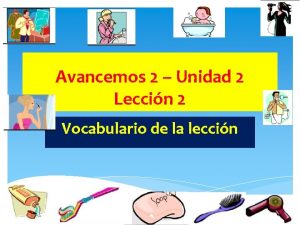

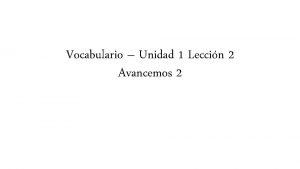
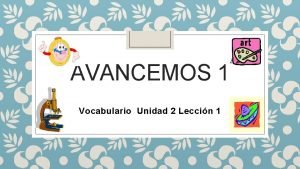
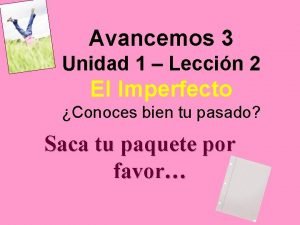
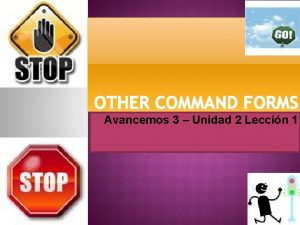

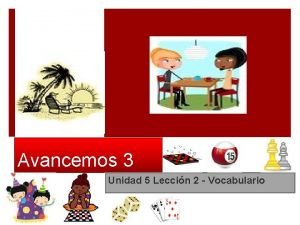
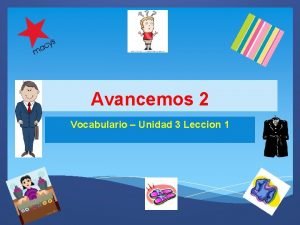
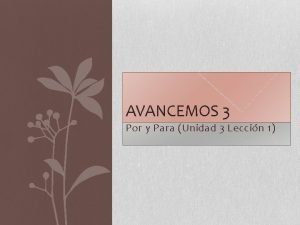
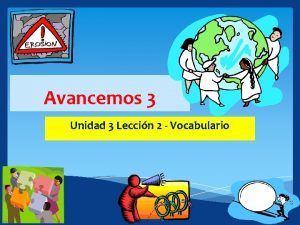
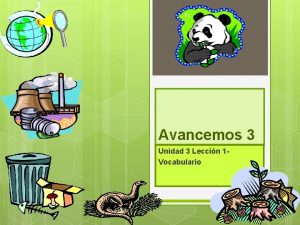
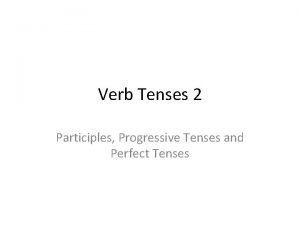
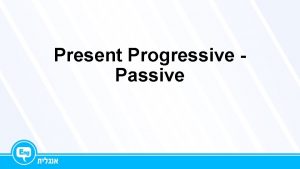
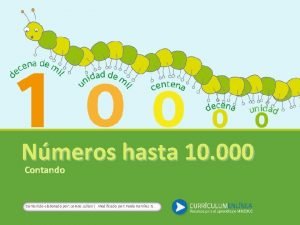
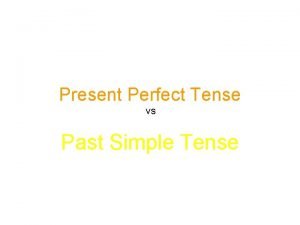
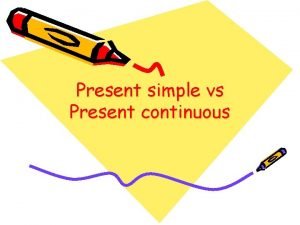

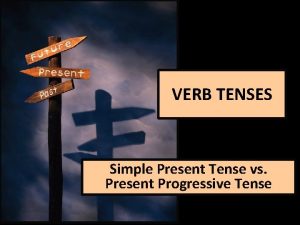
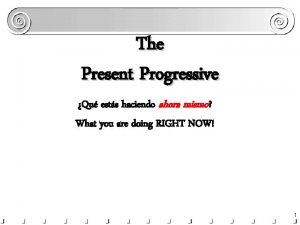



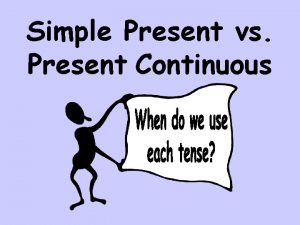

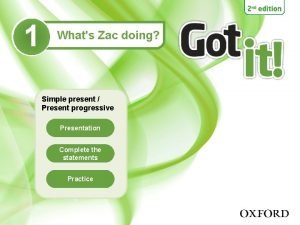
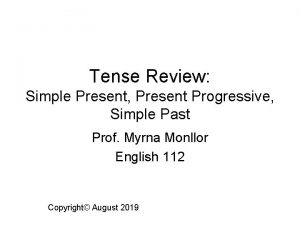
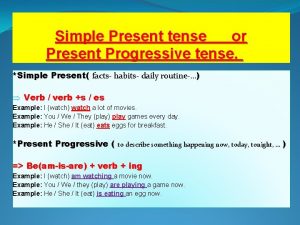
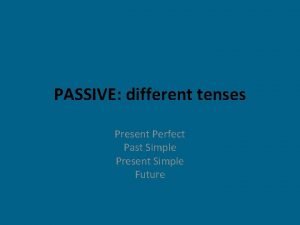

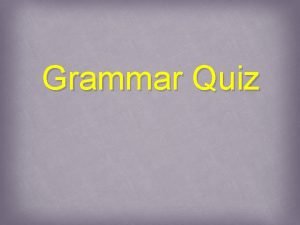
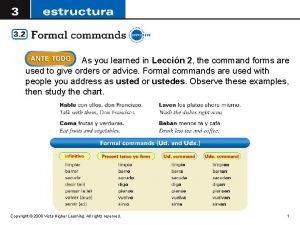
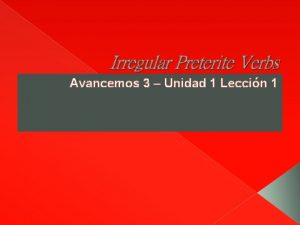
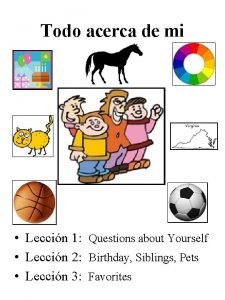
![(you [fam.] dropped) las pastillas. (you [fam.] dropped) las pastillas.](https://slidetodoc.com/wp-content/uploads/2020/12/2869291_b74ccaebd8876676efceeaa1f1a8fa04-300x225.jpg)

